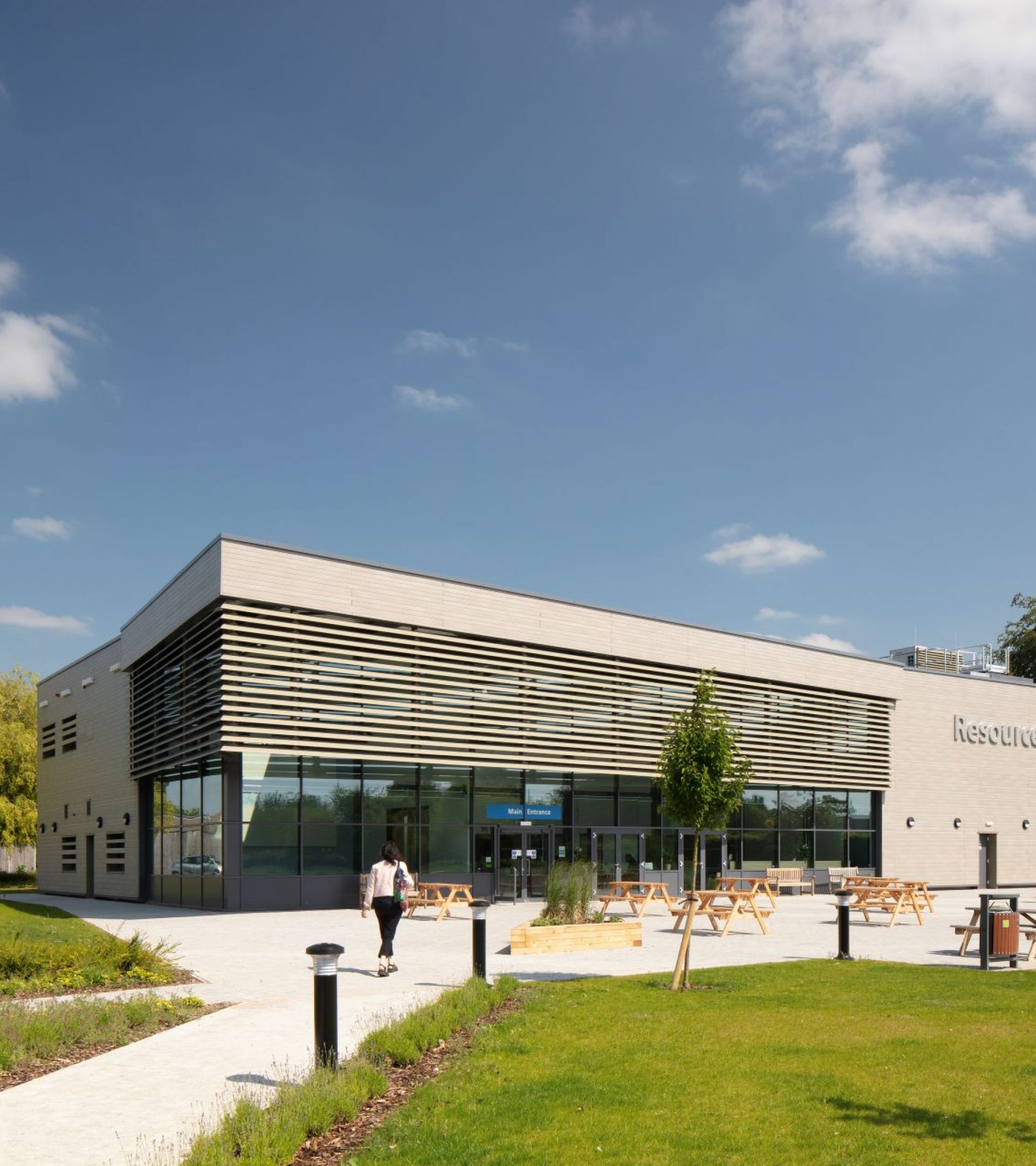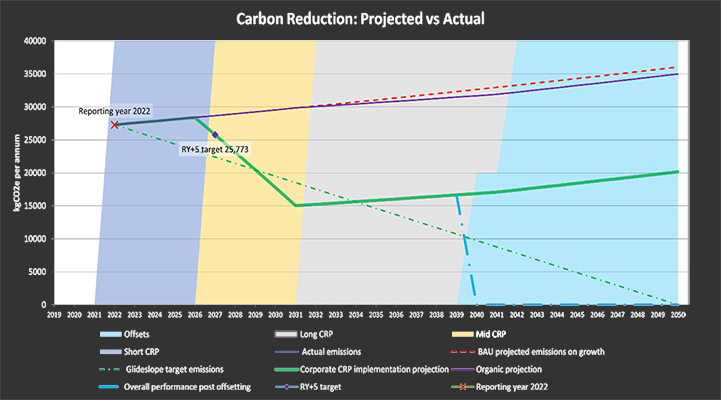
Murphy Philipps Associates LLP - Carbon Footprint Statement and Carbon Reduction Plan
About Us
Murphy Philipps Associates LLP is an architectural firm where excellence is the blueprint for every project we envision. Our commitment to delivering practical, superior-quality designs is unwavering, even within the most stringent time and cost frameworks.
Our projects are a testament to our responsibility towards the communities we serve and the environment we share. By incorporating the best practices in architectural and sustainable design, we aim to contribute positively and constructively to the built environment. Our mission is to deliver thoughtful, innovative solutions that not only reach but surpass client expectations.
Murphy Philipps is not only recognised for our design excellence but also for our adherence to the highest standards of quality management and environmental stewardship, as evidenced by our ISO 9001 and ISO 14001 accreditations. Our commitment to safety and quality in construction is further underlined by our CHAS accreditation and registration with Constructionline. We are a firm that builds enduring relationships based on trust, quality, and sustainable practices.
Commitment to Achieving Net Zero
Murphy Philipps is committed to achieving Net Zero emissions by 2050. Furthermore, through our Carbon Reduction Plan we are targeted to achieve Net Zero emissions by 2040.
Scope 1 emissions (direct emissions at site or from company owned or operated assets) were deemed not applicable to our operations. Scope 2 emissions (direct emissions from purchased electricity) only represent 23.67% of our total emissions, whilst appliable categories of Scope 3 (indirect emissions from the supply chain) represent 76.33%. Therefore, achieving the 2040 target will mostly require us to reduce our Scope 3 emissions, by focusing on improving employee commuting and reducing business travel. Further improvements across the three emission scopes will come about as a matter of course (via UK Gov targets and requirements, evolution of industries, new regulations etc.) and will require active engagement by us with our suppliers and staff as well as development of supply chain and operational policy.
This is the first year of reporting for Murphy Philipps PPN 06/21, for the period July 2022 to June 2023. Within the upcoming years of reporting, we are confident that we can achieve business growth without the same subsequent increase in our emissions.
Baseline Emissions Footprint
Baseline emissions are a record of the greenhouse gases that have been produced in the past and were produced prior to the introduction of any strategies to reduce emissions. Baseline emissions are the reference point against which emissions reduction can be measured.
|
Baseline Year: 1st July 2022 to 30th June 2023 |
|
|
Additional Details relating to the Baseline Emissions calculations. |
|
|
We have made a comprehensive audit of the included scope emissions from this baseline year in order to get a full impression of business as usual. Our projections are based on growth of the business which are reflected in our Business-As-Usual CO2 emissions. We have made these calculations based on our Operational Control over our emissions. |
|
|
Baseline year emissions: |
|
|
EMISSIONS |
TOTAL (tCO2e) |
|
Scope 1 |
0.00 - Deemed not applicable to Murphy Philipps’ operations. |
|
Scope 2 |
6.46 |
|
Scope 3 (Included Sources) |
20.83 This includes the following sources which are within the inclusion categories for Scope 3:
|
|
Total Emissions |
27.29 (tCO2e) |
Current Emissions Reporting
|
Reporting Year: 1st July 2022 to 30th June 2023 |
|
|
EMISSIONS |
TOTAL (tCO2e) |
|
Scope 1 |
0.00 - Deemed not applicable to Murphy Philipps’ operations. |
|
Scope 2 |
6.46 |
|
Scope 3 (Included Sources) |
20.83 This includes the following sources which are within the inclusion categories for Scope 3:
|
|
Total Emissions |
27.29 (tCO2e) |
Emissions Reduction Targets
In order to continue our progress to achieving Net Zero, we have adopted the following carbon reduction targets.
We project that our Business As Usual (BAU) carbon emissions will increase over the next five years to 28.68 tCO2e by FY 2027-28. This is a 5% increase in our BAU emissions due to the growth of our business.
However, our current strategy is to make emissions reductions via a 3-stage CRP and concluding with zero emissions by 2050 at the latest. It is our current intention to practicably minimise all emissions by 2040. From that point, we aim to offset all residual emissions such that our carbon footprint defined by this PPN is zero from 2040 through to 2050.
Therefore, with taking our reduction actions into consideration, we project that carbon emissions will decrease over the next 5 years to 25.77 tCO2e. This is a reduction of 10% against BAU.
Progress against these targets can be seen in the graph below:

Carbon Reduction Projects
To date, our organisation has undertaken the installation of LED lighting within our office premises to enhance energy efficiency and reduce electricity usage. We also have access to secure cycle storage and provision of shower facilities to facilitate the use of sustainable means of transport. Furthermore, we have bolstered our communication with staff members, advocating for environmentally responsible practices. This includes initiatives aimed at minimising waste and conserving energy wherever feasible.
In addition, by conducting this PPN 06/21 annually, we will be able to understand where our emissions hotspots are and how to counteract these.
In the future we plan to implement further measures such as:
- Purchase all electricity from renewable sources, corporate, short-term
We will aim to switch all electricity tariffs to green tariffs with 100% REGO backed renewable electricity, to reduce emissions from purchased electricity.
- Carry out site audit and implement all viable energy saving opportunities, corporate, short-term
Implementing energy-saving measures following a thorough site audit significantly reduces emissions, contributing to environmental sustainability. This approach will also lead to substantial cost savings and enhance our reputation for our commitment to green practices.
- Carry out delivery consolidation actions on all items delivered to site, corporate, short-term
We will place orders to consolidate deliveries into fewer, larger shipments, which can significantly reduce emissions by minimising the number of trips required, thereby contributing to more efficient and environmentally friendly logistics operations.
- Reduce the use of paper across entire business, corporate, short-term
Continuing the transition to digital solutions and minimising paper usage across the business can lead to a substantial reduction in emissions, stemming from decreased demand for paper production, transportation, and waste processing.
- Enhancing recycling provision at the office, corporate, short-term
We will provide further segregation of recyclable and waste items in the office to promote environmental responsibility among employees and also to significantly reduce waste, contributing to a more sustainable and eco-friendlier workplace. To do this, we will also aim to opt for products packaged in bulk or with eco-friendly materials, and choose brands that use minimal, sustainable packaging.
- Reduce purchases with plastic wrapping, corporate, short-term
Preference will be given to products with less plastic wrapping to reduce environmental pollution and waste, contributing to a healthier ecosystem and promoting sustainable consumption practices.
- A reduction in commuting emissions by not using own car but cycling/walking/public transport, corporate, short-term
To minimise commuting emissions, we will encourage employees to cycle, walk, or use public transport instead of using their own cars, possibly through incentives, as befitting our central London office location. Carpooling may be appropriate where car use is necessary.
- Reduction of business train travel, corporate, short-term
When in-person attendance is not necessary, we will leverage online meeting platforms which can significantly reduce travel-related emissions, as virtual meetings eliminate the need for physical transportation.
- A reduction in business travel emissions by use of public transport instead of taxis / cars or by switching to electric, corporate, short-term
To reduce business travel emissions, employees will be encouraged to use public transport. Where this is not feasible, they should request electric vehicles for business travel. This could be done by educating staff about the environmental benefits and available infrastructure for these choices.
- Domestic energy efficiency behavioural change, corporate, mid-term
We will encourage employees to implement our office energy efficiency measures relating to lighting, heating and cooling, and electronic devices while working from home. Behaviour change can lead to significant reductions in utility costs and a lower carbon footprint. This can be achieved by educating staff members about energy-saving practices, incentivising efficient behaviours, implementing energy-saving policies, and leading by example to encourage a culture of sustainability.
- Reduction in carbon emissions of public transport (business travel), external, long-term
It is expected that the public transport systems will become greener (e.g. more electric buses) and therefore utilising this for business travel will consequently reduce Murphy Philipps’ emissions over time.
- Reduction in carbon emissions of public transport (commuting), external, long-term
Encouraging employees to use public transport for commuting will increasingly reduce the company's carbon footprint over time, as public transport systems become more environmentally friendly.
- Reduction in carbon content of national grid electricity, external, long-term
As the power grid becomes greener over time, with a higher incorporation of renewable energy sources, businesses will automatically experience a reduction in their carbon emissions simply by drawing power from this cleaner grid. This shift means that without additional efforts, companies will contribute less to environmental pollution, aligning them more closely with sustainable energy practices.
We also anticipate some changes in UK industry which will help us to reduce our carbon footprint:
- Improvements in municipal waste management systems
Furthermore, in future we aim to improve our carbon emissions monitoring and to undertake a full carbon footprint assessment.
Declaration and Sign Off
This Carbon Reduction Plan has been completed in accordance with PPN 06/21 and associated guidance and reporting standard for Carbon Reduction Plans.
Emissions have been reported and recorded in accordance with the published reporting standard for Carbon Reduction Plans and the GHG Reporting Protocol corporate standard[1] and uses the appropriate Government emission conversion factors for greenhouse gas company reporting[2].
Scope 1 and Scope 2 emissions have been reported in accordance with SECR requirements, and the required subset of Scope 3 emissions have been reported in accordance with the published reporting standard for Carbon Reduction Plans and the Corporate Value Chain (Scope 3) Standard[3].
This Carbon Reduction Plan has been reviewed and signed off by the board of directors (or equivalent management body).
Signed by
Name: Clive Guyer
Position: Director
Date: 15 February 2024.
